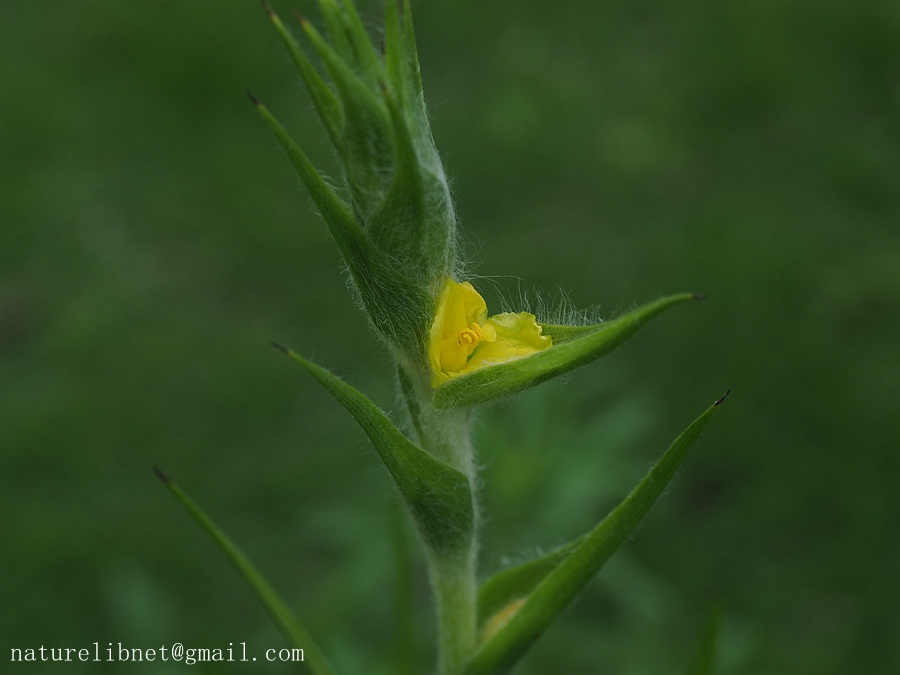- Scientific Name: Philydrum lanuginosum Gaertner
- Ref: Fruct. Sem. Pl. 1: 62. 1788.
- Synonyms: Philydrum cavaleriei H. Léveillé.
- English Common Name: Frog mouth
- Chinese Common Name: 田葱 tian cong
- Japanese Common Name: たぬきあやめ (狸菖蒲)
- Family: Philydraceae
- Genus: Philydrum
- Distribution: Ponds, marshes, rice fields; rarely above 100 m. Fujian, Guangdong, Guangxi, Taiwan,Zhejiang [India (Andaman Islands), Japan, Malaysia, Myanmar, Papua New Guinea, Thailand, Vietnam; N Australia].
Herbs tufted. Basal leaves 12--25, 30--80 cm including sheath 1--1.5 cm × 2--3.5 mm; leaf blade soft, veins 7--9, apex tapering. Cauline leaves usually 2 or 3. Flowering stem scapose, slender, terete, glabrescent proximally, villous toward inflorescence. Spikes simple, sometimes branched, woolly; bracts ovate, 2--7 × 0.7--1 cm, abaxially woolly, apex abruptly acuminate and subulate. Outer 2 perianth segments subovate, 8--10 mm, abaxially woolly, base with 2 strong veins, margin undulate, apex acute; inner 2 segments smaller than outer 2, spatulate, membranous, veins 3, base adnate to filament for 1--2 mm, apex acute. Stamen 6--9 mm, glabrous; filament flattened; anther subglobose. Ovary 6--7 mm, densely long woolly. Style 3--4 mm, glabrous; stigma dark reddish, capitate, 0.7--0.9 mm, long papillose. Fl. Jun--Jul, fr. Sep--Oct.(Flora of China)
